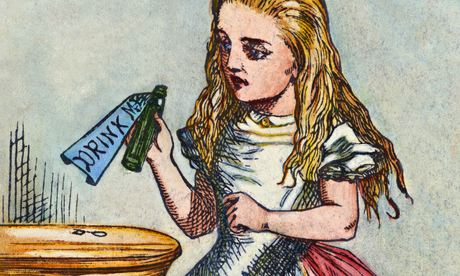
Over the years there has been immense speculation about the potentially inappropriate relationship between Charles Dodgson (the author Lewis Carroll) and Alice Liddell (later Alice Hargreaves), the little girl for whom he first wrote down the Alice in Wonderland stories in the 1860s. When researching the history of the real-life Alice to see if there was any truth to this allegation, it transpired that she went on to have three sons, all of whom fought in the first world war – two of whom were killed during it.
The original Wonderland stories are full of allusions to death and the afterlife. When my company, Metta Theatre, came to stage our new production, Alice, based on Carroll's story and the real-life Alice, we fused the magic of the rabbit-hole with the story of a mother losing her son to the first world war.
How better to invert the notion of young girl versus old men than to reimagine those characters through a mother and her son?
I wanted to explore those stories through the eyes and memories of a mature Alice. Politically, I wanted to present an older female protagonist on stage (this is sadly still a surprising rarity) and also to stop reinforcing the storytelling cliche of naive young girl buffeted along from one male authority figure to another.
Little is known about the Hargreaves' sons, and the relationship depicted in the play is entirely fictional. The fact that her eldest son, Captain Alan Hargreaves, was killed in action on 9 May 1915 (the day on which we have set Alice) is important, but their relationship as portrayed in the performance is a more universal exploration of motherhood and the loss of identity that comes with ageing.
The original text is so gorgeous, so full of nonsense, and for the most part already a series of duologues; no doubt a hangover from when Dodgson first conjured them for Alice during a boat ride in 1862. So I set myself the literary challenge of using only his words (apart from the occasional "Alan", and some extracts from genuine first world war, mother-to-son letters).
My company creates theatre that wears its theatricality on its sleeve. I adore the magic and the collective suspension of disbelief that comes with puppetry, as well as the other-worldliness that the best puppets so beautifully express. So using puppetry to bring Wonderland to life was an instinctive choice. We wanted to use authentic objects appropriate to the era and hobbies of the Hargreaves family – and everything had to be created from objects Alice finds in her cellar, as this is where the play is set, with Alice sheltering from an air raid. This presented some practical challenges, not least because I was keen that all objects should come together to form the puppets and just as easily be disassembled back into their constituent objects. The answer was lots of very expensive heavy-duty magnets!
Our puppet designer, Yvonne Stone, created a world that's both true to the period and also invests each puppet with the sentimental attachment that we associate with personal objects like a christening gown (which becomes the White Rabbit) and old sports socks (which become the ears of the March Hare). The first world war military objects are themselves such powerful and symbolic items; a gas mask and a helmet become the Mock Turtle and a revolver holster becomes the Gryphon. These objects, once transformed into animate creatures, embody the madness of war infused with the nonsensical spirit of wonderland.

